This is the 27th post in a series of Nikon D850 tests. The series starts here.
In the preceding post, I looked at the on-axis sharpness and longitudinal chromatic aberration (LoCA) of the Sigma 135 mm f/1.8 ART lens on the Nikon D850. Now I’ll do the same test with the Sigma 105 mm f/2.8 F-mount macro lens.
The target is a backlit razor blade:
The test protocol:
- ISO 64
- Focus shift, silent shutter option
- 40 steps
- Minimum step size (1)
- Target distance, 1.5 meters
- Aperture exposure mode
- Wescott LED panels set to 5500 K.
- Gitzo legs
- Arca Swiss C1 head
- Vinyl tile flooring over 6 inches of concrete on grade
- Fast Raw Viewer to discard the really out of focus images
- dcraw in document mode to get raw planes
- MTF Mapper to compute MTF50
- Matlab to automate the above
- Excel to graphs the results
Here are the results wide open:
The vertical axis is MTF50, measured in cycles per picture height (cy/ph). The shot taken with the lens focused to the closest position is on the left. There are 7 more exposures plotted. There is no way to know the focused distance for these exposures. I used the minimum step size for the Focus Shift Shooting feature, which is too large to reliable catch the actual peaks, but it’s not that bad. Sharpness is good, but not off-the-charts. LoCA as shown by the difference in step number between the peak sharpness on each raw channel, is moderate.
Green channel sharpness at f/4 is impressive. Now there’s only a one-step difference among the three raw channel peaks. That’s not because the absolute distances between the peaks have changed significantly, but because the D850 in FSS mode takes bigger steps as you stop the lens down.
Another good result.
Now diffraction is dragging everything down to its level. The DOF is enough to cover up the LoCA.
Nothing wrong with that lens, at least so far.
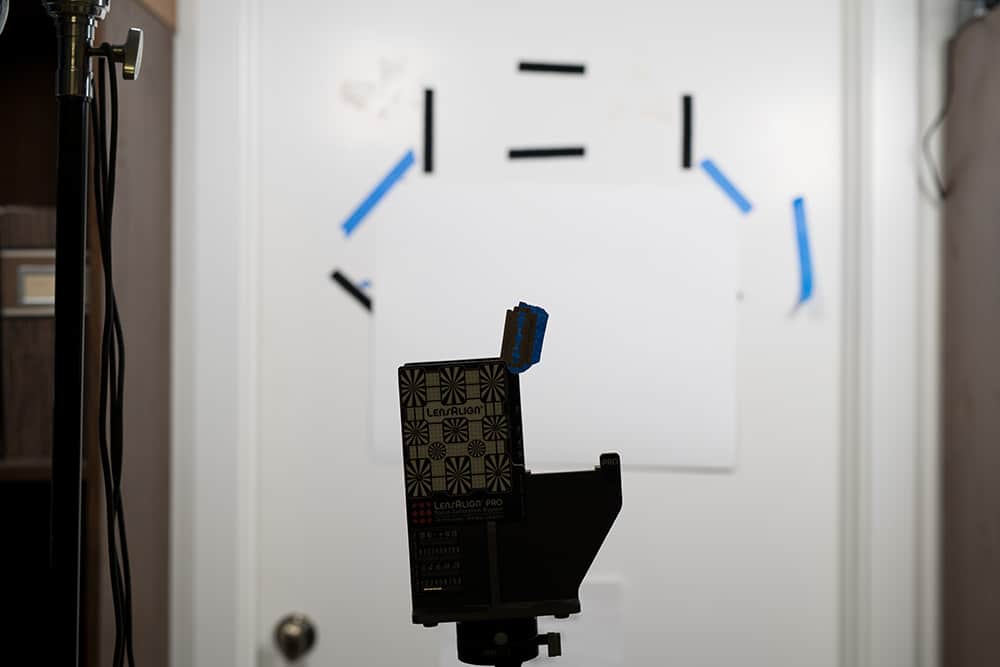
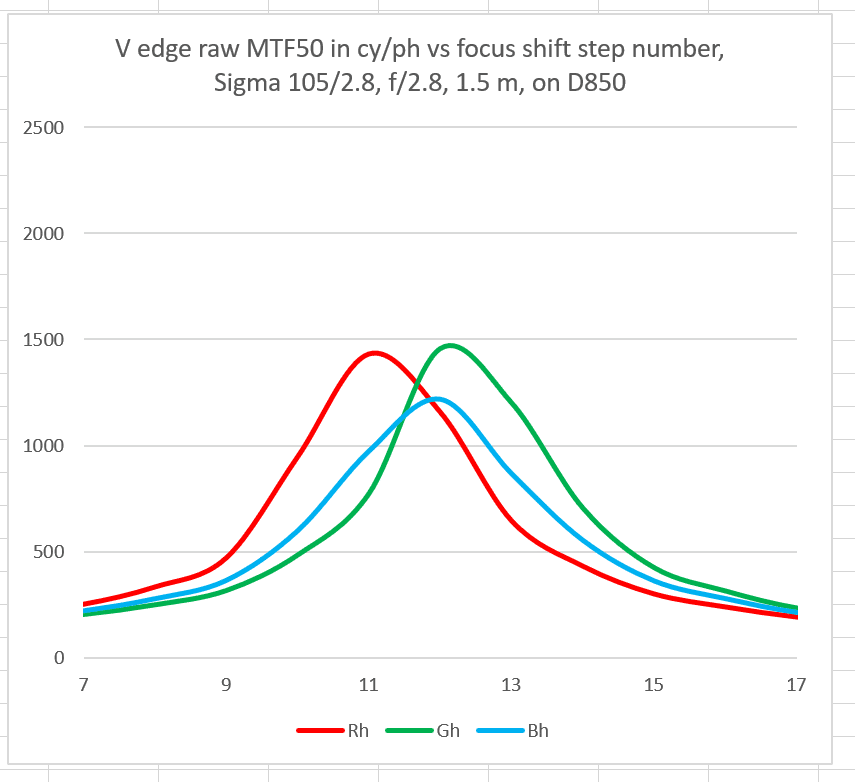
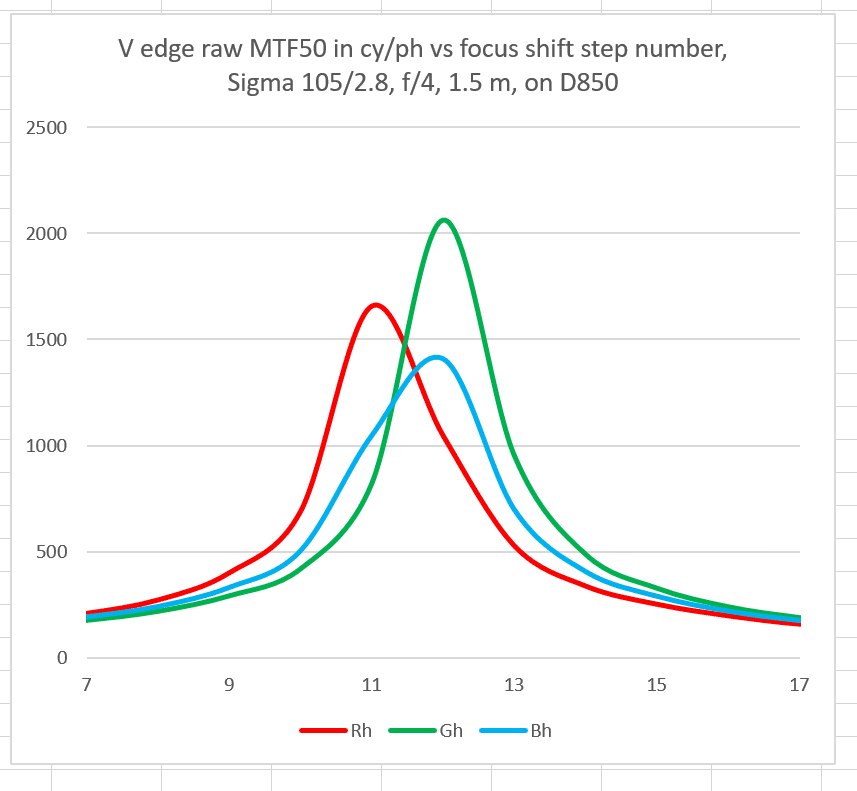
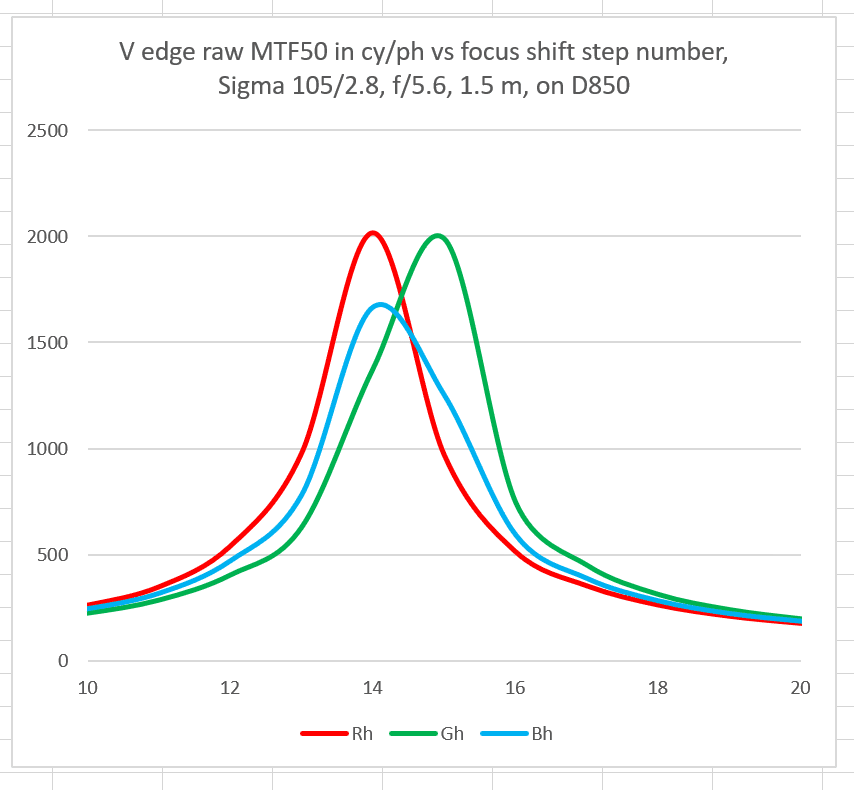
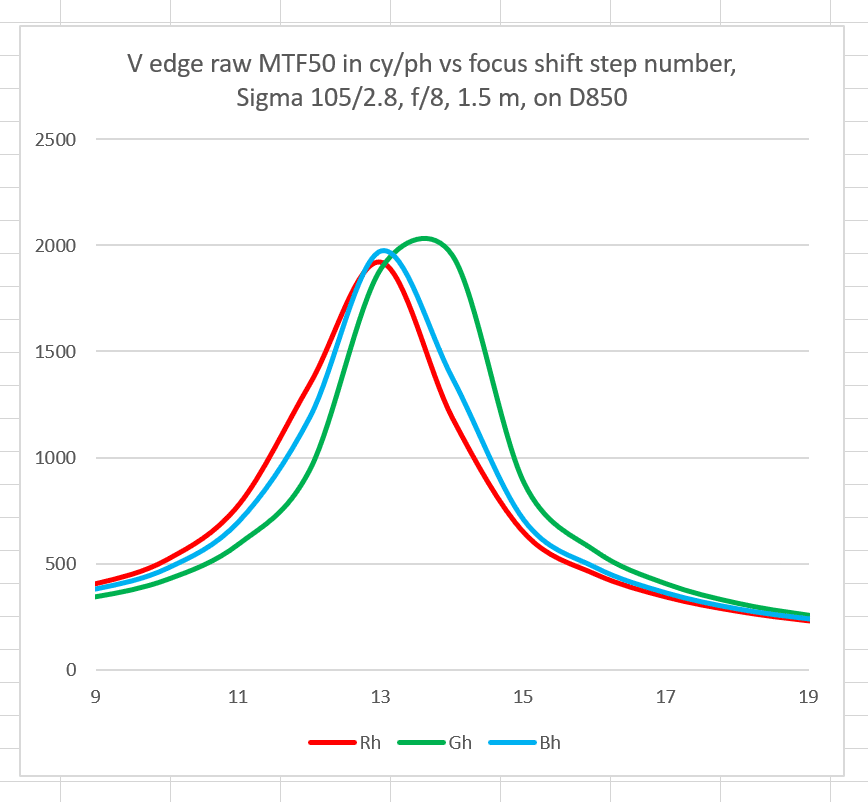
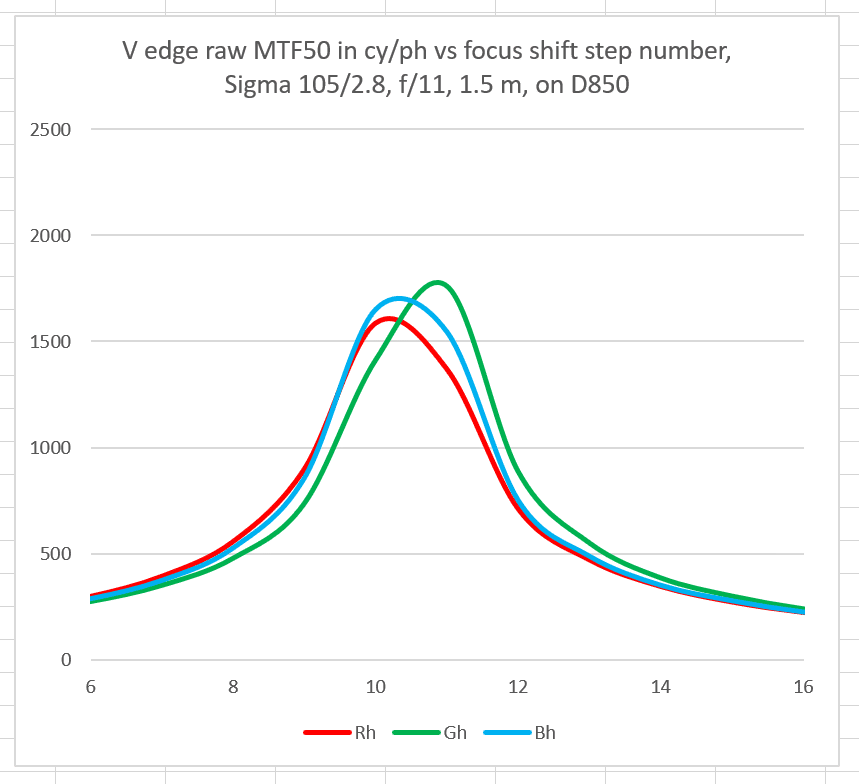
AndrewZ says
Nikon just needs to updated the focus step to the smallest possible distance for all apertures and it would be a simple firmware fix. I expect to see it implemented sometime next decade though. I’m surprised more manufactures built in this feature as magic lantern has had this feature for years and it seems pretty popular.
AZSteve says
The last two charts are from the 135mm test, not the 105mm. No need to “publish” this comment, but I’m curious about the relatively elderly 105 stopped down.
JimK says
Titles are wrong. Graphs are right. Sorry. I may get around to replacing these with the curve-fitted instead of the spline-fitted graphs, and I’ll be sure to get the titles right.
AZSteve says
The curves are exactly the same in the two graphics on the 105 and 135 pages, n’est-ce pas? For these apertures there don’t seem to be two separate sets of data for the two lenses.
JimK says
My bad. Fixed now. Thanks for your patience.